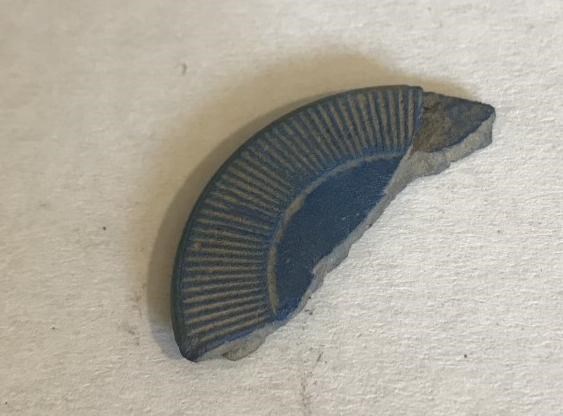Last updated: October 25, 2023
Article
Case Study: Oral History Uses in Cultural Resources Management
This article was contributed by Rose Masters, Park Ranger, Oral History Manzanar National Historic Site

NPS
Oral history transforms our understanding of the cultural landscape at Manzanar National Historic Site in myriad ways. Archeological and cultural remnants, like a barracks basement, a stone path, or a 100-year-old pear tree come to life through the stories linked to these exact locations. The stories preserve richer meanings that would otherwise be lost to time.
Sometimes oral history provides answers to mysteries uncovered during archeological excavations that otherwise would seem circumstantially strange. For example, in 2019, cultural resources staff at Manzanar uncovered a broken poker chip from a hole in the extant foundation of the camp hospital’s morgue. An unusual spot for a poker game, right? But to rangers familiar with the oral histories of Frank Chuman, former Manzanar Hospital administrator, and Arnold Maeda, former hospital orderly, this discovery was an exciting link between the site’s tangible remains and stories passed down by those who had lived this history.
Both Chuman and Maeda recalled hospital staff holding late-night poker sessions in the morgue whenever they could. “It was very quiet,” recalled Chuman, “…and nobody wanted to come in there, so we had a good time.” Because the US government had outlawed gambling in the camps, the morgue served as a secure place to resist the rules and push back against the strictures of an unjust incarceration.
Oral histories also have prompted new archeological work. The clearest example is excavation of the Arai Family Fish Pond. During a 2006 oral history interview, Madelon Arai Yamamoto mentioned her father, Jack Hanshiro Arai, had constructed a beautiful pond next to the barracks where their family lived in Block 33. She recalled that he had populated the pond with koi, perch, and minnows.
“Many people from blocks around would come to admire the fish pond not only because of the koi that were in there, but also for the water lilies that he put in there,” said Madelon. “It would be very interesting if someone could go there and see if it’s still there, buried under everything…”
Before this interview, NPS archeologists had been unaware of a pond at this location because extensive duff and groundcover in Block 33 had obscured it. In 2011, Manzanar staff worked alongside volunteers—including Madelon Arai Yamamoto—to unbury the fishpond.
Research and Restoration
A Place of Beauty and Serenity:
Excavation and Restoration of the Arai Family Fish Pond, Manzanar National Historic Site

NPS

NPS
Another archeological discovery came from a 2012 oral history with Roy Higa. During the interview he recalled, “You know, it gets very hot at Manzanar, very windy, and in the summertime, there’s nothing much you can do. So, I said, ‘Well, since I grew up in a nursery, I know a lot about shovel work, and I like to dig.’ So, I thought, ‘Gee, sure would be nice if I had a basement where it’d be cool.’ So, I started digging and digging and digging and pretty soon, I had this nice little area. And I thought, ‘Gee, I need some furniture...’ I got this crate…and I made a chair that you could lean back on. I said, ‘Hey, that’s neat,’ so…I made four chairs…and I made a table. So, my friends…we didn’t have much to gamble, so our favorite game was pinochle. So, we used to go down and the four of us, we used to play...”
In 2015, staff and volunteers – including Roy’s son, Mitch Higa – uncovered and documented Roy’s basement in Manzanar’s Block 14. Someone even placed four chairs inside the newly revealed space, in homage to Roy and his friends sneaking in a private game of pinochle behind barbed wire. These revelations and insights came thanks to the clues that emerged in oral history interviews.

NPS
